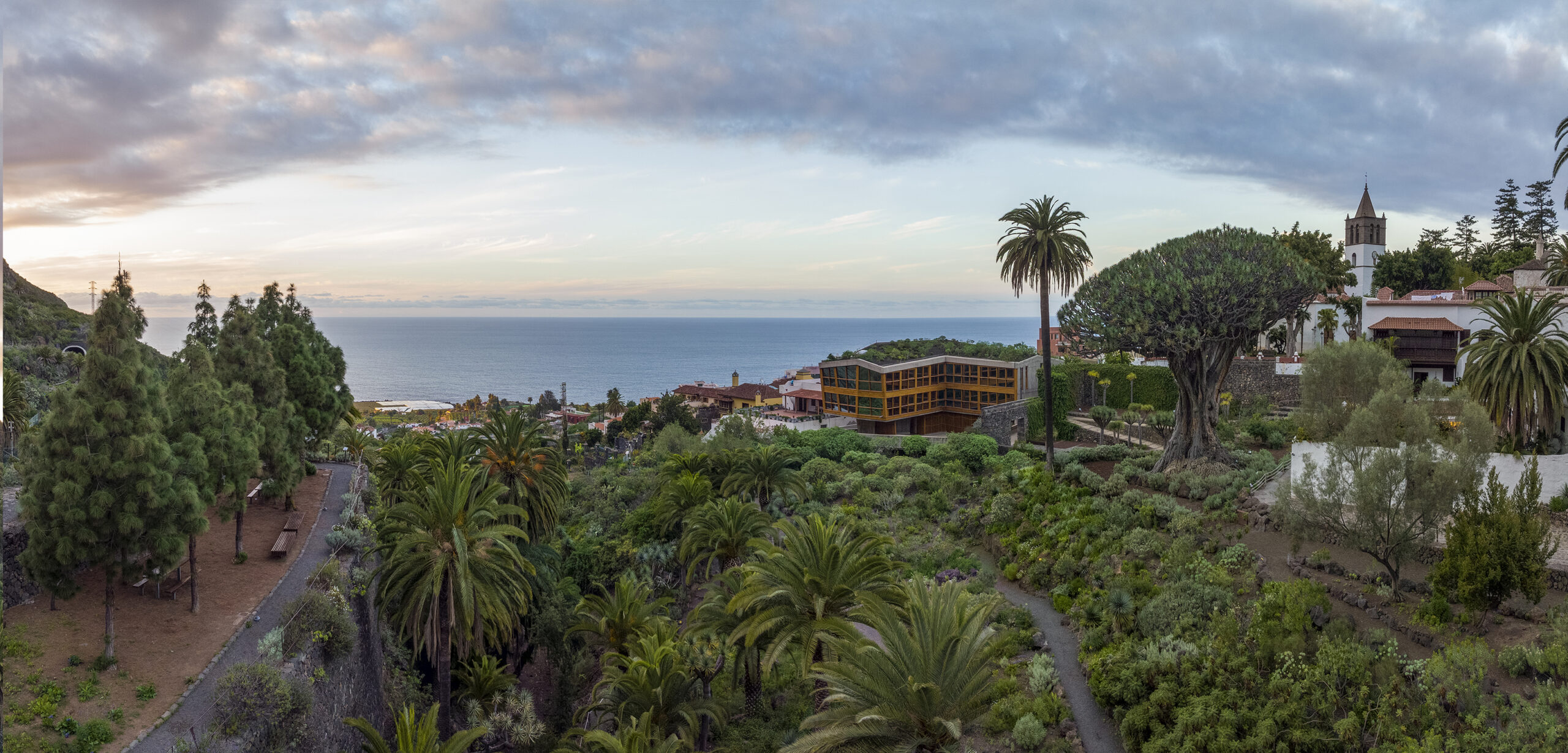This website uses cookies so that we can provide you with the best user experience possible. Cookie information is stored in your browser and performs functions such as recognising you when you return to our website and helping our team to understand which sections of the website you find most interesting and useful.
The Dragon Tree Park 1998-2023
25 years embracing the mythical thousand-year-old Dragon Tree in Icod de los Vinos, on Tenerife island

The Dragon Tree of Icod de los Vinos (El Drago de Icod) is the most important botanical specimen in the history of the Canary Islands. A tree that was standing for hundreds of years, but which needed urgent action at the beginning of the 80s, since its survival was threatened by the contamination of its environment.
Millions of tourists wanted to visit it, but the heavy development around it endangered the life of the Dragon Tree. The El Teide volcano, which is the most visited place in Tenerife with more than 3 million people a year, is followed by the The Dragon Tree Park (Parque del Drago) with around 1 million people a year.
Twenty-five years have passed since the Drago and its new park reopened to the public in 1998. Even more time has passed since the process of restoring the natural conditions of this mythical tree, which was in danger at the dawn of democracy in Spain, began: in 1984, we won an international public design competition for the Dragon Tree Park to protect it from the hustle that had been progressively developed around this unique specimen. Although these 40 years have only been a moment for the millenary Dragon Tree, for us they have translated into an ongoing architecture and landscaping project that has accompanied us throughout our career until now.
When scientific congresses began to talk about “biodiversity” and “renaturation of urban environments”, but they were not yet mainstream concepts, the entry of a team of three young architects – Artengo, Menis and Pastrana – proposed a slow process of ecological restoration, which won the international public design competition called for this site located in the small town of Icod de los Vinos, at the insistence of numerous biologists and botanists, concerned about the health of the Dragon Tree. What happened next is that the Dragon Tree Park has become one of the most important interventions in the Canary Islands in terms of the conservation and restoration of the biodiversity of a space, a ravine in this case.
The way in which ecological restoration was conceived at that time, connects and explains the current project of our studio “Islas del mundo” (“Islands of the World”): it condenses Fernando Menis’s expertise in approaching architecture as part of the landscape. The Dragon Tree Park project put nature, a unique tree, at the center. Today this decision may seem the most logical, it may seem like a decision full of common sense, but in the `80s when tourism in the Canary Islands was booming, the project was perceived as impossible and insane, since it proposed the elimination of the road that passed nearby, an essential general route in the north of the island, very busy with locals and tourists.
The young team’s redesign project removed the road to protect the Dragon Tree from all kinds of pollution and vibrations, away from the noise and smoke of the city to return it to its original habitat, as it was the way it had grown for centuries, protected by a wall that separated a farm from the town of Icod de los Vinos. This fence, which was no longer there, was recreated by raising a wall again, located in the same place, with the same height and made with the same material, that is, local basalt stone. On the other hand, the perimeter of the old farm, the last one between the town and the ravine, was fenced off again as always to protect the tree that grew on the edge of the ravine, living for hundreds of years in the original environment, a natural paradise from which it was expelled, forcing its introduction into the urban center and on the island’s tourist routes.
During the 25 years that have elapsed since the completion of the park, all the biodiversity of the ravine on the edge of which the tree sits has slowly been recovered. Both the tree and the nature that surrounds it can be visited and enjoyed by locals and tourists. Work is currently underway to achieve the completion of the Visitor Center, a building designed by the same architects and the reason for a new legal controversy in 2023, the last of the many vicissitudes that this project has been enduring.

 Español
Español